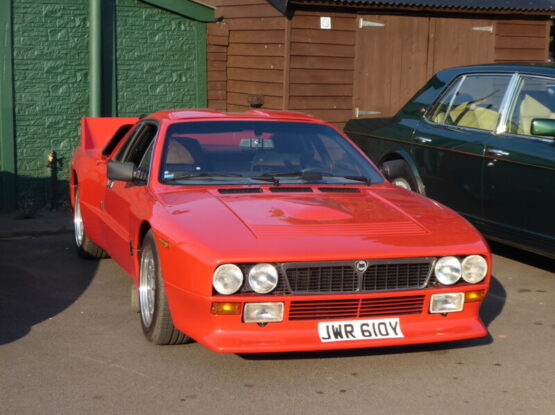 Even 2 full days are not sufficient to see all the exhibits at the UK’s largest classic car show, the NEC Event, which is also linked to the MPH show with Top Gear Live Action theatre. Two days is more than enough to walk your legs short, though, so it is some relief in that respect to sit at my PC, uploading photos, writing this item and formatting it, as I reflect on the bewildering array of interesting cars I have just seen, the many good conversations both with friends and fellow forummers and some perfect strangers who were clearly also blessed with the enthusiast’s love of cars.
Even 2 full days are not sufficient to see all the exhibits at the UK’s largest classic car show, the NEC Event, which is also linked to the MPH show with Top Gear Live Action theatre. Two days is more than enough to walk your legs short, though, so it is some relief in that respect to sit at my PC, uploading photos, writing this item and formatting it, as I reflect on the bewildering array of interesting cars I have just seen, the many good conversations both with friends and fellow forummers and some perfect strangers who were clearly also blessed with the enthusiast’s love of cars.Although I took in excess of 800 photos, there are plenty of vehicles that I saw which simply did not get the camera pointed at them. With several thousand cars on show, that is almost inevitable. It is worth commenting on the lighting, too, as many other frustrated photographers did just that. I found that using the flash pretty well all the time gave better results than not doing so, even though this means that the colours in the pictures may not look quite like the cars were in real life. There were simply too many dark patches with the result you could barely see the car in the picture if you turned the flash off. Even so, I’m not entirely happy with all the results, but have left most of the pictures in the report, as I figured that a sub-optimal picture is probably better than just text.
I have chosen to present the cars by marque, rather than by club stand. This year the organisers seem to have done a far better job at grouping all the clubs associated with a marque more closely together, which was something I appreciated, though whether this was a good thing for the rivalary between clubs, I am less sure.
Enjoy the show. You can appreciate it without walking your legs short, or battling with the crowds!
NEC CLASSIC CAR SHOW
ALFA ROMEO
The “big one” for Alfa is next year, when the marque celebrates its centenary, with a whole panapoly of events. I’ve now got the listing of those which the Alfa Romeo Owners Club are organising, and will make sure that Forummers are not ignorant of these! For this show, a relatively small stand was always busy, populated with a number of cars with “Z” in their name. That meant predominantly a mix of the SZ and RZ cars from the 1990s. Among the many new items of trivia that I picked up at the show was the fact that virtually all the RZs were finished in yellow or black, so a red one is particularly rare, and although the cars look similar just about every body panel is different between the two models.
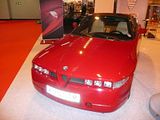
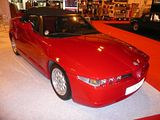

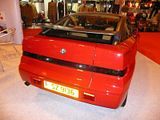
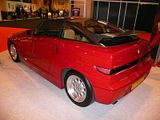
 Sole other car was the stunningly attractive Guilietta SZ from the very early 1960s.
Sole other car was the stunningly attractive Guilietta SZ from the very early 1960s.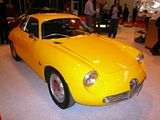
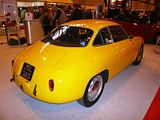

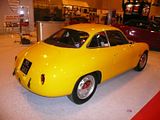 ALVIS
ALVIS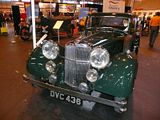
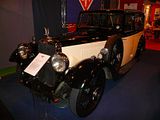 An estate body is definitely one of the more unusual versions of this Coventry based marque.
An estate body is definitely one of the more unusual versions of this Coventry based marque.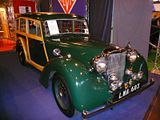 ARMSTRONG-SIDDELEY
ARMSTRONG-SIDDELEYAn early offering.
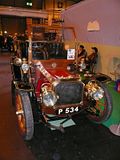 The Sapphire was launched in the mid 1950s, and sold in small numbers until the marque ceased production in 1960.
The Sapphire was launched in the mid 1950s, and sold in small numbers until the marque ceased production in 1960.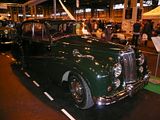 ASTON MARTIN
ASTON MARTIN AUDI
AUDII was expecting a rather bigger presence, to celebrate the centenary of this marque, but instead, there were just a few cars to represent the last 100 years.
This 1000 model, also branded as a DKW 3.6 had an unusual 2 stroke engine, and a roomy body.
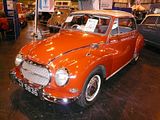
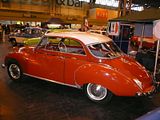 The Junior was launched in 1960, and was a popular small car of its day.
The Junior was launched in 1960, and was a popular small car of its day.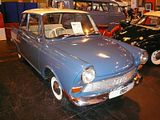
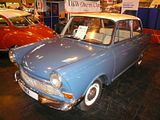 An urQuattro, one of the later models of this genre-defining car.
An urQuattro, one of the later models of this genre-defining car.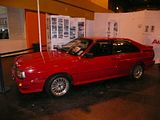 AUSTIN
AUSTINVast numbers of the Austin Seven were made, as this little car was really the vehicle that put Britain on wheels, and vast numbers of them have survived, for us to enjoy now.
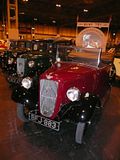
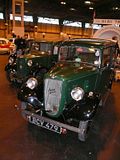
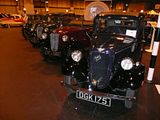
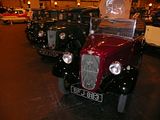
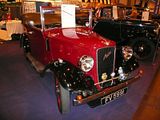
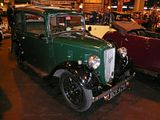

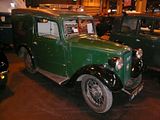
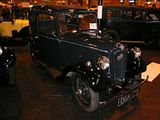 Several of the larger Austins from the same era were also on show, too. There was a very complex range of models, many named after towns in the UK., a precursor to the “County” series of cars that came post WW2.
Several of the larger Austins from the same era were also on show, too. There was a very complex range of models, many named after towns in the UK., a precursor to the “County” series of cars that came post WW2. 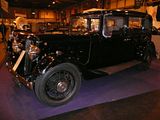
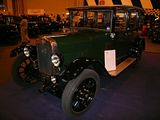
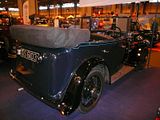 The A40 Dorset was the family car that launched immediately after the war, along with a pickup version.
The A40 Dorset was the family car that launched immediately after the war, along with a pickup version.
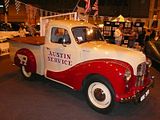 The A90 Atlantic was aimed at the US market, but whilst the styling might have hit the mark, the wheezy and anaemic engine was simply not powerful and the car did not sell well..
The A90 Atlantic was aimed at the US market, but whilst the styling might have hit the mark, the wheezy and anaemic engine was simply not powerful and the car did not sell well..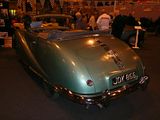 The A125/135 cars were frequently used as the basis for various limousines and other conversions such as these cars.
The A125/135 cars were frequently used as the basis for various limousines and other conversions such as these cars.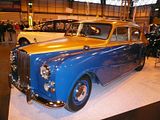
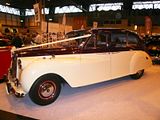
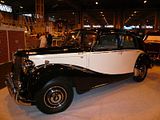
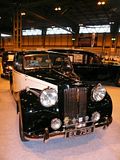 The A30/A35 was a popular small car in the 1950s.
The A30/A35 was a popular small car in the 1950s.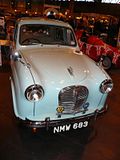 The third in the trio of Alec Issigonis’ front wheel family of cars was the 1800, launched in 1964. It never enjoyed the success of its smaller relatives. This car was unbelievably spacious inside.
The third in the trio of Alec Issigonis’ front wheel family of cars was the 1800, launched in 1964. It never enjoyed the success of its smaller relatives. This car was unbelievably spacious inside. 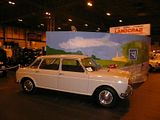
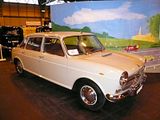
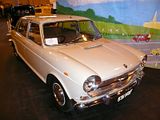
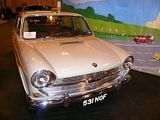

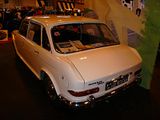 Space efficiency was also the forte of the Maxi, a much under-developed hatchback that the potential to be a world beater, but which never even got close to that potential.
Space efficiency was also the forte of the Maxi, a much under-developed hatchback that the potential to be a world beater, but which never even got close to that potential.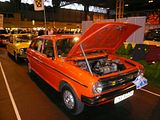
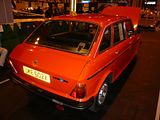 AUSTIN-HEALEY
AUSTIN-HEALEYMuch loved by enthusiasts, there was a nice display of the 100/3000 cars, the “Big Healey”.

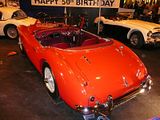
 The Sprites were on a separate stand.
The Sprites were on a separate stand.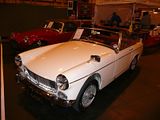 This Arkley car was a special body on Sprite mechanicals.
This Arkley car was a special body on Sprite mechanicals.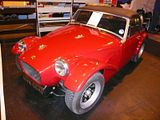 BITTER
BITTERA three car stand, with 2 examples of the SC and one of the earlier CD model.

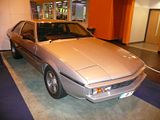 BMW
BMWThe popularity of this marque is not yet reflected in the number of BMWs that you find at am event like this. Star of the stand, without question was this 507. One of just 252 cars built, it ended up costing more than double the price estimated, which meant that the market for the car in 1955 was very small. Very lovely, though.
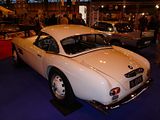
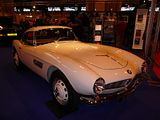
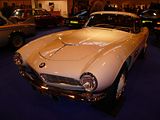 Also nice were these 3.0 CS and CSL cars.
Also nice were these 3.0 CS and CSL cars.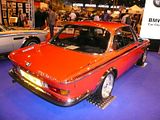

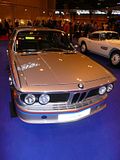
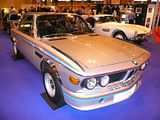 The stand was completed with a Z1, an E3 3.3Li and a 635CSi.
The stand was completed with a Z1, an E3 3.3Li and a 635CSi.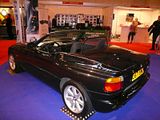
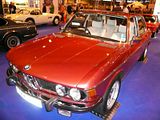
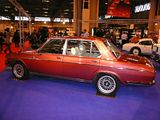
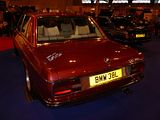
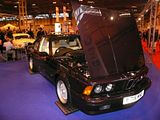 Elsewhere, an immaculate E28 based Alpina B10 was generating many compliments for its condition and its understated lines.
Elsewhere, an immaculate E28 based Alpina B10 was generating many compliments for its condition and its understated lines.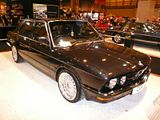 BORGWARD
BORGWARDThere were three examples of the Isabella, a well respected German quality car of the 1950s, to enjoy.
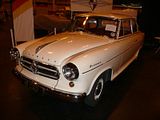
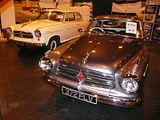
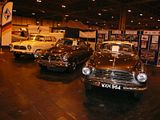
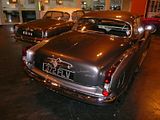
 BRISTOL
BRISTOLA 405 saloon, the only Bristol ever offered with four doors.
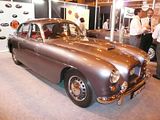

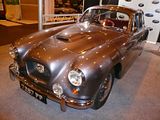 The 405 Zagato looked familiar, as we had seen this car at Prescott earlier in the year.
The 405 Zagato looked familiar, as we had seen this car at Prescott earlier in the year.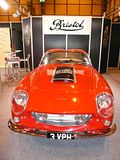
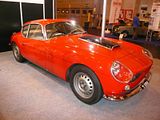
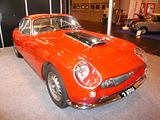 BUGATTI
BUGATTICrowds were gathered around this stand all day long on the Saturday, and it is not hard to see why. Star attractions were the EB110S and the Veyron, both of which had been in action at “La Vie en Bleu” earlier in the year.
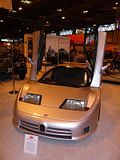
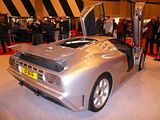 Classic Bugatti were represented by the very lovely Type 57, a Type 59B and a Type 15
Classic Bugatti were represented by the very lovely Type 57, a Type 59B and a Type 15

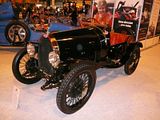
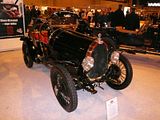 CADILLAC
CADILLACSome splendid 1950s machines here, and none more splendid than the 1959 model, the one with the largest tail fins ever. Fabulous!
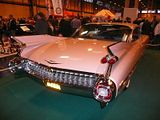 This is the 1960 model, when the excess had been toned down a little.
This is the 1960 model, when the excess had been toned down a little. CHEVROLET
CHEVROLETA stand specialising in US imports offered a view of the new Camaro and a 2010 Mustang alongside it for comparison. Offered for less than £25,000 in the UK, these cars appear to be bargain priced, but the running costs would clearly not be quite such value for money, in the UK. Which would you prefer? Form your own conclusion, but the consensus of the Forummers present was the Chevy.
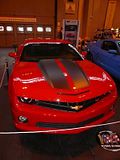
 There were numerous Corvettes in the American car section. Only this, a 1962 model seemed to be captured by my camera
There were numerous Corvettes in the American car section. Only this, a 1962 model seemed to be captured by my camera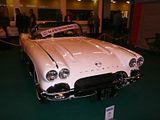
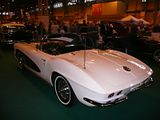 CHRYSLER
CHRYSLERAn Australian muscle car, a Charger from the early 1970s.
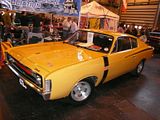 CITROEN
CITROENA particularly fine stand here, with three unique prototypes on loan from the “Conservatoire Citroen”, a collection of priceless treasures not usually open to the public.
The Cocinelle dates from 1956, and is an interesting vehicle, but one with rather a lot of practical challenges, which may help to explain why the vehicle was not developed further.
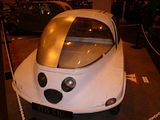
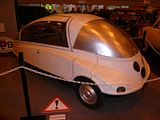
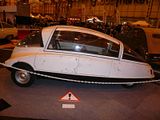 This is the C-60, a prototype for a car to slot between the Ami and the DS, with some styling cues from each. It did not proceed, but eventually a car was produced to fill that gap in the range, and this was, of course the GS.
This is the C-60, a prototype for a car to slot between the Ami and the DS, with some styling cues from each. It did not proceed, but eventually a car was produced to fill that gap in the range, and this was, of course the GS.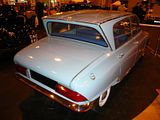
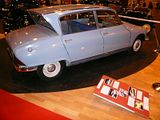
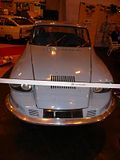 “Project L” dates from 1971, and evolved into the production CX. Draw your own conclusions, but I think the styling alterations that were made towards production were all of benefit.
“Project L” dates from 1971, and evolved into the production CX. Draw your own conclusions, but I think the styling alterations that were made towards production were all of benefit.
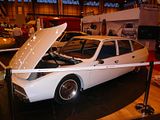
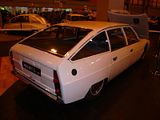
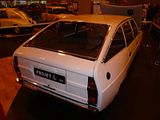
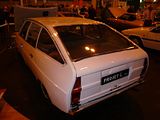 A good mix of the popular 2CV cars were on the stand, including one of the prototypes.
A good mix of the popular 2CV cars were on the stand, including one of the prototypes.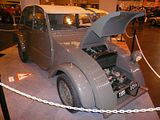
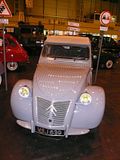
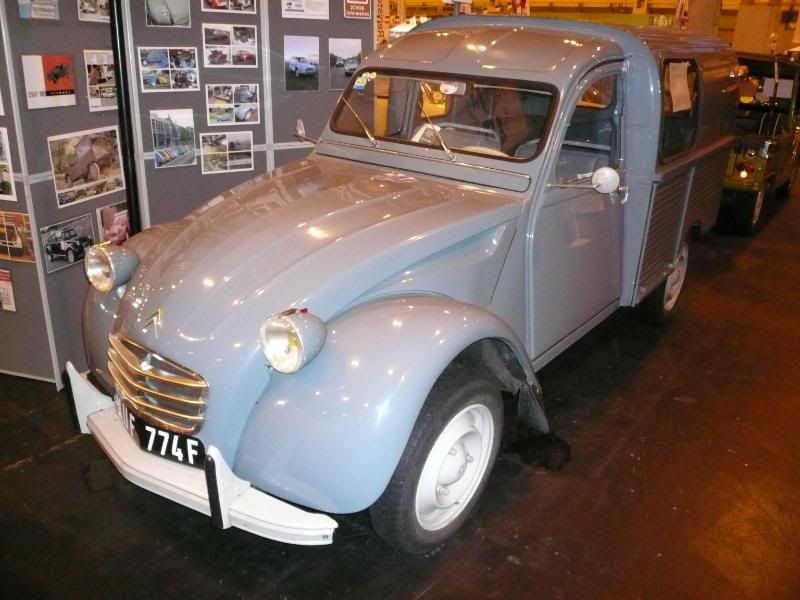

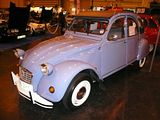
 In an effort to come up with something less unconventional looking, Citroen UK devised the Bijou, but this small car was a complete sales disaster with less then 250 of them sold. Survivors are very rare now days.
In an effort to come up with something less unconventional looking, Citroen UK devised the Bijou, but this small car was a complete sales disaster with less then 250 of them sold. Survivors are very rare now days.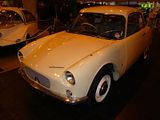
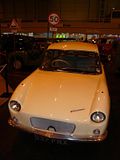
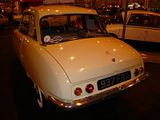 There was a lone example of the Dyane, the slightly upmarket brother to the 2CV.
There was a lone example of the Dyane, the slightly upmarket brother to the 2CV.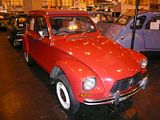
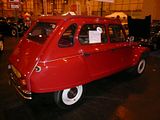 I’ve seen this particular Ami 6 Estate at a couple of other events before. Believed to the last survivor in the UK.
I’ve seen this particular Ami 6 Estate at a couple of other events before. Believed to the last survivor in the UK.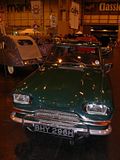
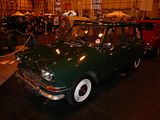
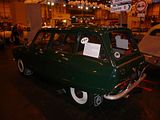 This Mehari was splendid to behold.
This Mehari was splendid to behold.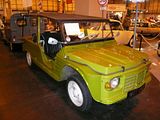
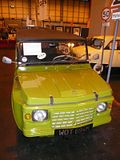
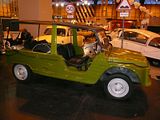 As was this very lovely DS23 – an elegant car even now, some 54 years after the first presentation of the DS model.
As was this very lovely DS23 – an elegant car even now, some 54 years after the first presentation of the DS model. 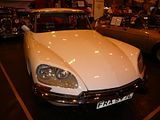 The Traction Avant cars were well represented, with many different models to enjoy.
The Traction Avant cars were well represented, with many different models to enjoy.

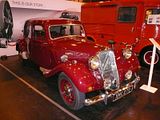


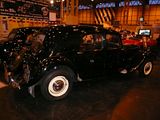 Even the BX is now quite a rare sight, this deserving its place on the stand.
Even the BX is now quite a rare sight, this deserving its place on the stand.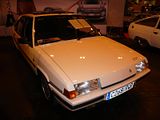 COMMER
COMMERThis was the brand for the commercial vehicles in the Rootes Group, and several of these once commonly seen vans were included in a display
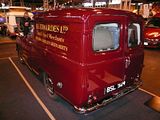
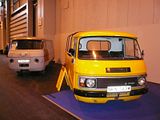
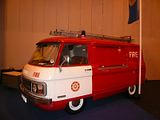
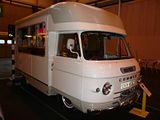
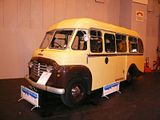 DAIMLER
DAIMLERA separate display for these cars, showing both those which were merely re-badged Jaguars and those which were unique models in their own right.
The DS250 sports car, otherwise known as the Dart, was the best example of that uniqueness.
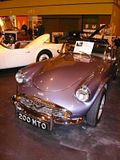

 The V8250 was based on the Mark 2 Jaguar, but was fitted with a 2.5 litre V8 engine.
The V8250 was based on the Mark 2 Jaguar, but was fitted with a 2.5 litre V8 engine.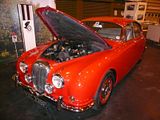
 The Majestic was a luxury model with no Jaguar equivalent.
The Majestic was a luxury model with no Jaguar equivalent.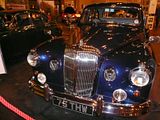 Elsewhere was this fabulous 1911 model.
Elsewhere was this fabulous 1911 model.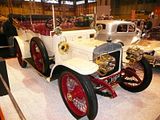 DELOREAN
DELOREANA couple of these popular gull-wing cars were on display.
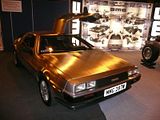 DKW
DKWFollowing the well-received stand at the 2008 event, the Irish DKW club had a stand again this year, with a variety of models on show.
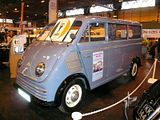 DODGE
DODGE
A Charger, from the height of the muscle car era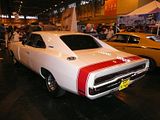 This car dates from about 1963.
This car dates from about 1963.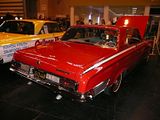 FAIRTHORPE
FAIRTHORPEA lone example of this largely forgotten British marque from the 1950s.
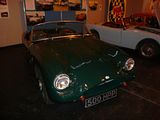 FARBIO
FARBIOA lone example of this little known GT car.
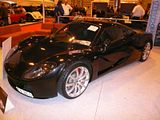 FERRARI
FERRARIOne the Friday, there was free access to see the cars close up. but on Saturday, non-FOC members were confined to the barriers, from where a variety of cars could be enjoyed.
212

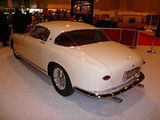
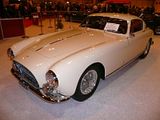 250 GT California Spider
250 GT California Spider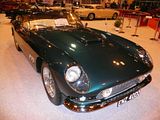
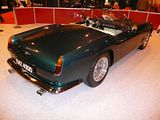 250GT 2+2 Lusso
250GT 2+2 Lusso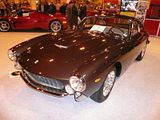
 Daytona
Daytona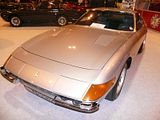
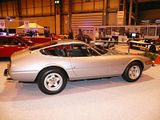
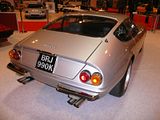
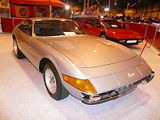 Mondial
Mondial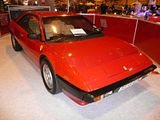 328 GTS
328 GTS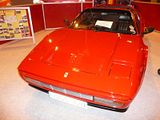 Enzo
Enzo

 This 275 GTB was on the Meguiars stand for competition winners from throughout the year.
This 275 GTB was on the Meguiars stand for competition winners from throughout the year.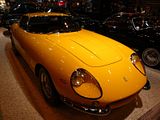
 FIAT
FIATThis 125 saloon is one of very few survivors of the once popular sports saloon. Sadly, most of the show-goers I heard thought it was a Lada!

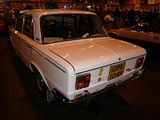
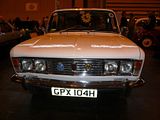 Attracting most of the attention on this diverse stand was this Multipla. Very rare in right hand drive, it was stunning.
Attracting most of the attention on this diverse stand was this Multipla. Very rare in right hand drive, it was stunning.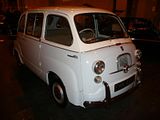
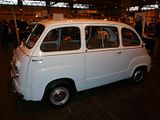
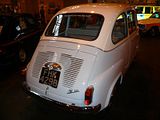 Even rarer than the 125, was an example of its successor, the 132.
Even rarer than the 125, was an example of its successor, the 132.
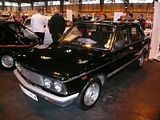
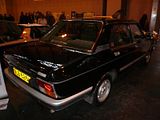 There were a couple of X1/9s, this one being a rare limited edition.
There were a couple of X1/9s, this one being a rare limited edition.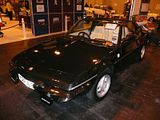 Rarer still is this fabulous Siata 500 convertible. This car underwent a lengthy and meticulous restoration, finally emerging for the Bristol Italian Auto Moto event in April.
Rarer still is this fabulous Siata 500 convertible. This car underwent a lengthy and meticulous restoration, finally emerging for the Bristol Italian Auto Moto event in April.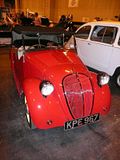
 FORD
FORD2009 marks 40 years since the launch of the Ford Capri and there were plenty of the “car you always promised yourself” to see.
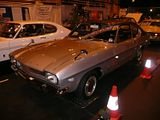
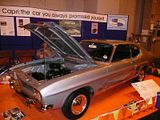

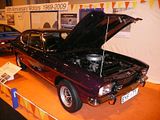
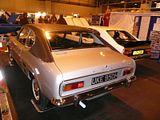
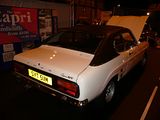
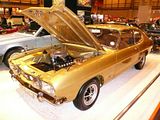

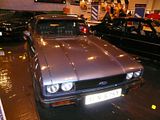
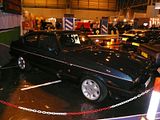 It is 50 years since the launch of the reverse-angle rear window Ford Anglia, and a special display had a representative of a car from every year of the 8 year production life of this car.
It is 50 years since the launch of the reverse-angle rear window Ford Anglia, and a special display had a representative of a car from every year of the 8 year production life of this car.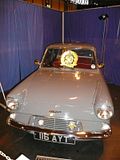
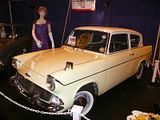
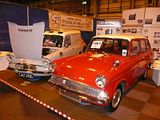
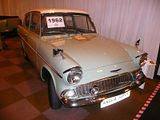
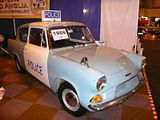
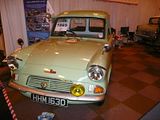
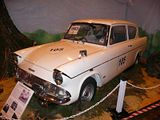

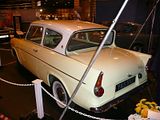 Cortinas of all generations were well represented.
Cortinas of all generations were well represented.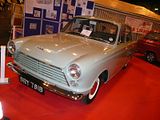
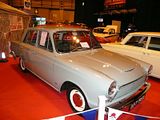
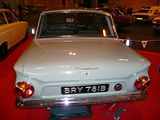

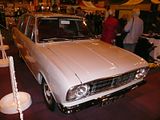

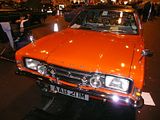
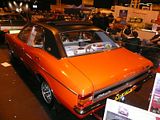
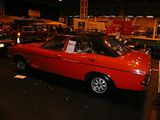
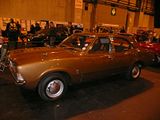
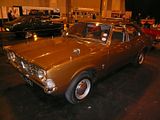

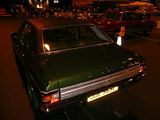
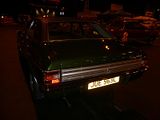
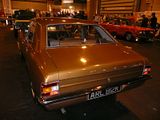
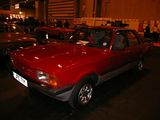



 Among the Sierras on show was a South African XR8 model, which came with a 5 litre V8 engine.
Among the Sierras on show was a South African XR8 model, which came with a 5 litre V8 engine.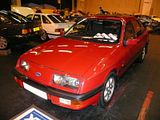
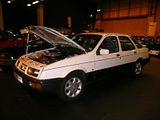
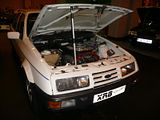 The Corsair was a slightly bigger brother to the Cortina, but never really captured the public’s imagination in the same way. A number of these cars survive, though, and a variety of the different models were presented at the show.
The Corsair was a slightly bigger brother to the Cortina, but never really captured the public’s imagination in the same way. A number of these cars survive, though, and a variety of the different models were presented at the show.

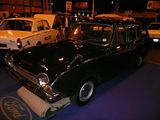

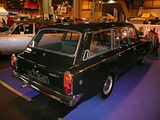 In its day, the Mark 3 Zephyr and Zodiac was a big car, and one that would be driven by senior managers. Now, it does not seem that huge, with the wheels looking lost in the wheel arches.
In its day, the Mark 3 Zephyr and Zodiac was a big car, and one that would be driven by senior managers. Now, it does not seem that huge, with the wheels looking lost in the wheel arches.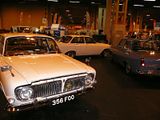
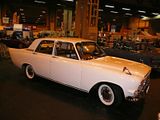
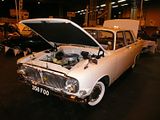
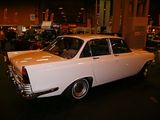

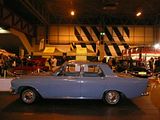
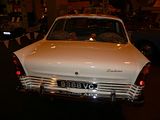
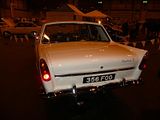 Successor to the Z cars were the Consul and Granada and a number of the more unusual variants of this range were on show.
Successor to the Z cars were the Consul and Granada and a number of the more unusual variants of this range were on show.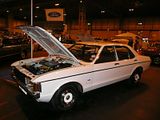

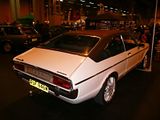
 There were a good number of sporting Escorts, mostly from the popular first generation.
There were a good number of sporting Escorts, mostly from the popular first generation.

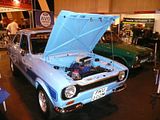

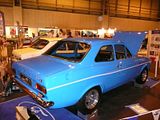 Plenty of sporting Fiestas to look at. Once a common sight on our roads, the Supersport and early XR2 cars are now a rare sighting.
Plenty of sporting Fiestas to look at. Once a common sight on our roads, the Supersport and early XR2 cars are now a rare sighting.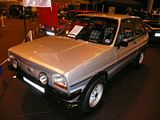
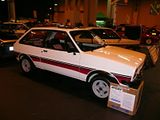
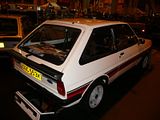
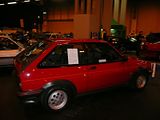
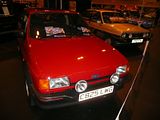

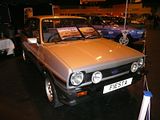 The Puma was one of the more recent Fords on show.
The Puma was one of the more recent Fords on show.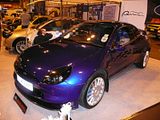 Among the older cars were some Model “A”s, along with a Model C and a Model Y.
Among the older cars were some Model “A”s, along with a Model C and a Model Y.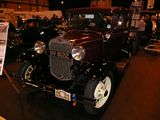
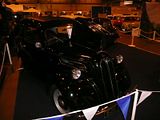
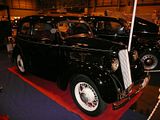
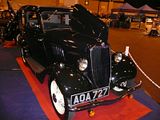 Other Ford cars included the 1950s Anglia/Prefect/Squire range, and the Thames commercial body.
Other Ford cars included the 1950s Anglia/Prefect/Squire range, and the Thames commercial body.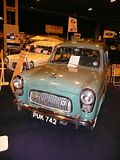
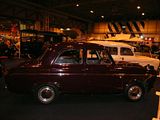

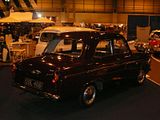
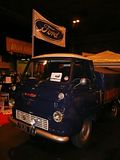 In the American car display, there was a splendid Edsel and some V8 cars from the 1930s.
In the American car display, there was a splendid Edsel and some V8 cars from the 1930s. 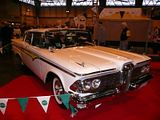
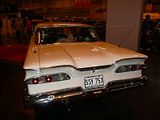
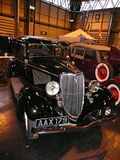
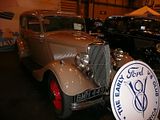

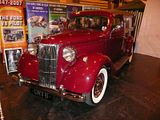 GILBERN
GILBERNI spent a good while at this display, talking to a very personable gentleman about the history of this marque – the only range of cars ever made in Wales, and admiring the 4 show cars. These cars were very costly when new, but were nicely built, and as they were based on BMC, and subsequently, Ford components are mechanically straight-forward and easy to keep running. A little over 1000 cars were built between 1961 and 1974 and over 500 of them are known still to exist. The vast majority were sold in the UK, with just a few headed overseas.
The GT was the first model produced, and this is a late example of the genre
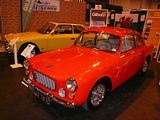
 It was replaced by a larger car, initially called the Genie, but subsequently renamed the Invader, which came in three different iterations, before production ceased in 1974. The last cars, the Mark 3, may look similar to the earlier ones, but in fact the body is completely different. The car is wider, as it needed to accommodate the Cortina running gear which underpins it..
It was replaced by a larger car, initially called the Genie, but subsequently renamed the Invader, which came in three different iterations, before production ceased in 1974. The last cars, the Mark 3, may look similar to the earlier ones, but in fact the body is completely different. The car is wider, as it needed to accommodate the Cortina running gear which underpins it..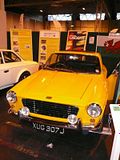
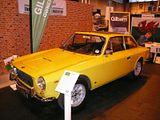

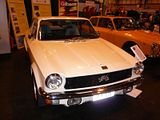
 HEALEY
HEALEYDonald Healey made his name with cars like these, the Silverstone.
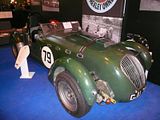 HILLMAN and CHRYSLER
HILLMAN and CHRYSLERThe Super Minx was initially intended to replace the long running Minx model, a name that dated back to the 1930s, but in the end, this larger car slotted into the range above the Minx, until both ranges were replaced by the “Arrow” range of cars.
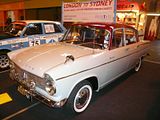
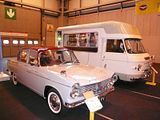
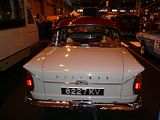 The “Arrow” cars were offered in a bewildering array of different models, with Hillman, Singer and Sunbeam badges on them. Mainstay of the range was the Hunter, a car I know well, as my father had a succession of these when I was little. Some much needed publicity was gained when this car won the London-Sydney Marathon in 1968, and this is a replica of one of those cars. Top model in the long-running range was the GLS, a car with luxury (for its day) trim, and a twin carburettor-ed engine, which endowed it with lively performance. These cars rusted badly, so to see any survivor now is rare indeed..
The “Arrow” cars were offered in a bewildering array of different models, with Hillman, Singer and Sunbeam badges on them. Mainstay of the range was the Hunter, a car I know well, as my father had a succession of these when I was little. Some much needed publicity was gained when this car won the London-Sydney Marathon in 1968, and this is a replica of one of those cars. Top model in the long-running range was the GLS, a car with luxury (for its day) trim, and a twin carburettor-ed engine, which endowed it with lively performance. These cars rusted badly, so to see any survivor now is rare indeed..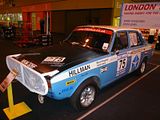

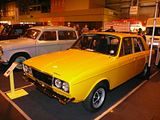
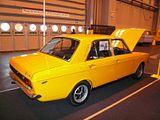 Hillman’s small car venture was the Imp, about which many words have been written over the years. A number of specials were produced (several of which appeared at the 2009 Bristol Classic Car Show), of which this is one.
Hillman’s small car venture was the Imp, about which many words have been written over the years. A number of specials were produced (several of which appeared at the 2009 Bristol Classic Car Show), of which this is one.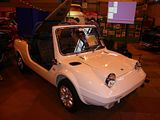
The Avenger was the mass market competitor of the 1970s that never captured the public’s imagination in the same way as the Escort and Viva, its principal competitors. The cars shown were a basic 1300 DL 2 door, a late example of the facelifted 1600 model (by which time it had gathered Talbot badges) and the rare Tiger.

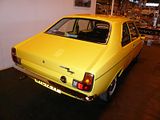
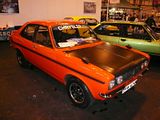
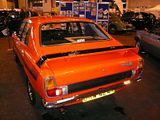
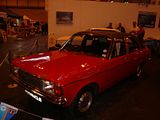 When a small hatchback was required, to replace the long running Imp, a cut-down Avenger chassis was used with a contemporary body draped over it. The result was the Sunbeam, a car now largely remembered for its rallying prowess when fitted with the the Lotus 2 litre engine. The show featured a rare Ti model, too, which was a sort of “hot hatch” before the term had been coined and before the market for such cars really took off.
When a small hatchback was required, to replace the long running Imp, a cut-down Avenger chassis was used with a contemporary body draped over it. The result was the Sunbeam, a car now largely remembered for its rallying prowess when fitted with the the Lotus 2 litre engine. The show featured a rare Ti model, too, which was a sort of “hot hatch” before the term had been coined and before the market for such cars really took off.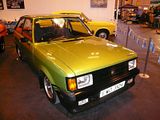

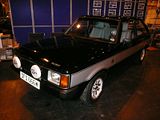
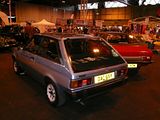

HONDAA small stand, with representatives of the S800 cars from the 1960s and the diminutive Beat.
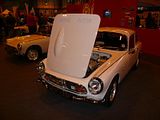
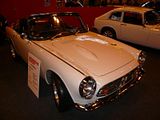
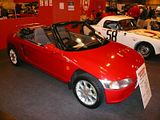 HUMBER
HUMBERThis car, based on the contemporary Super Snipe, was produced as transport for HM the Queen and Prince Philip for their Australian tour in 1953. The car was retained for official visits for many years, until eventually it passed into private ownership and gradually deteriorated, until repatriation and restoration to the stunning standard which it now enjoys.
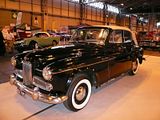
 An Australian pick-up of similar vintage was an interesting and rare accompaniment to this car.
An Australian pick-up of similar vintage was an interesting and rare accompaniment to this car. 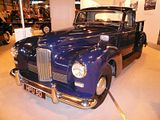
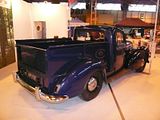 The Imperial was the top model in the range, and this particular car was one of a small batch produced with a V8 engine. This venture was not deemed a success and the plans were shelved.
The Imperial was the top model in the range, and this particular car was one of a small batch produced with a V8 engine. This venture was not deemed a success and the plans were shelved.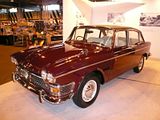
 JAGUAR
JAGUARCommon consensus was that this car, the SS Airline, was probably the most stunning car at the show. How could anyone fail to fall for the looks of this? Remarkably, this car was sold for the equivalent of under £18,000.
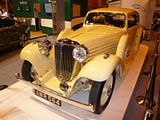 There were plenty of other classic Jaguars, too, such as this SS1 and the SS100
There were plenty of other classic Jaguars, too, such as this SS1 and the SS100
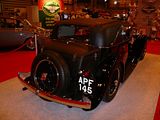
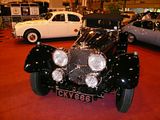 Several of the ever popular XJ cars, including a one-off prototype 2 door coupe XJ40 model
Several of the ever popular XJ cars, including a one-off prototype 2 door coupe XJ40 model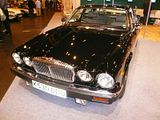
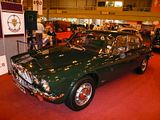
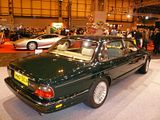
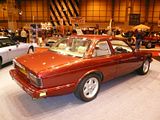 And the XJ220
And the XJ220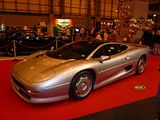 Several “E” Types, of course.
Several “E” Types, of course.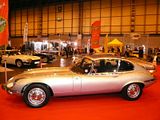
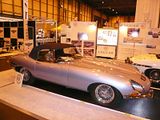
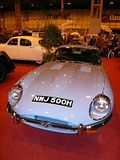 The 240/340/380 cars were popular as a “compact” Jaguar in the 1950s and early 1960s.
The 240/340/380 cars were popular as a “compact” Jaguar in the 1950s and early 1960s.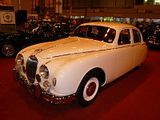
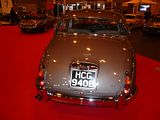

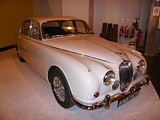 The “S” Type
The “S” Type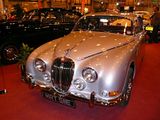 Mark IX
Mark IX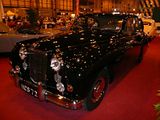
 The XJS is now well accepted in the classic car scene, and numerous examples of this long running car were on the stands.
The XJS is now well accepted in the classic car scene, and numerous examples of this long running car were on the stands.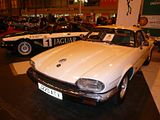
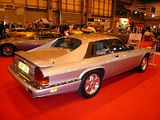
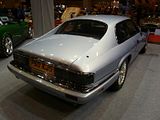
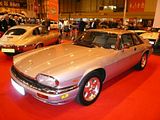 JENSEN
JENSENA wider variety of cars that most people would credit Jensen for were on show.,including a couple of pre-war cars.
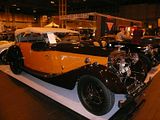
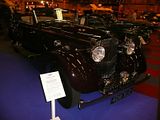 The 541
The 541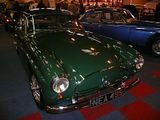
 The CV8.
The CV8.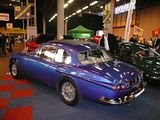
 The final Jensen car was the SV8, of which a few were built before the company ceased trading.
The final Jensen car was the SV8, of which a few were built before the company ceased trading.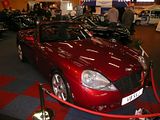 LANCIA
LANCIAIt is 30 years since the launch of the Delta, and there were examples of all three different model generations.
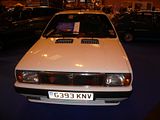
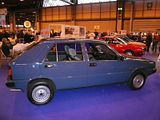
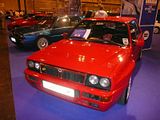
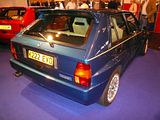
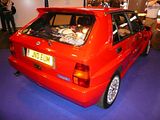
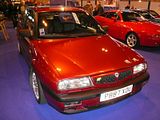
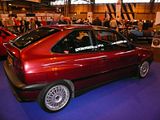
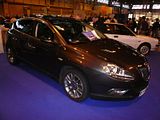 The Hyena was a brave effort to build a stylish couple based on the Integrale. When Lancia refused to supply the component parts, complete cars had to be acquired, dismantled and then recreated with the stylish body. This meant that the price rocketed making the car far too expensive. I saw one advertised for sale recently, and there was not much change out of £100,000..
The Hyena was a brave effort to build a stylish couple based on the Integrale. When Lancia refused to supply the component parts, complete cars had to be acquired, dismantled and then recreated with the stylish body. This meant that the price rocketed making the car far too expensive. I saw one advertised for sale recently, and there was not much change out of £100,000..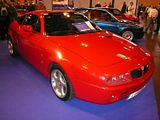
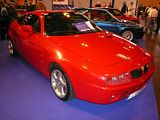
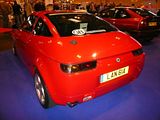



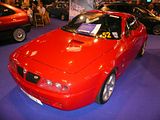 There was also a full range of Beta models on show, including the very rare Series 3 Berlina that I so enjoyed seeing at the Gaydon Italian car event in September.
There was also a full range of Beta models on show, including the very rare Series 3 Berlina that I so enjoyed seeing at the Gaydon Italian car event in September. 
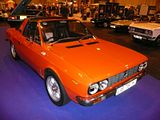
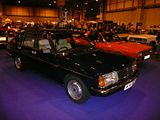
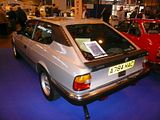
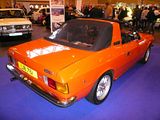
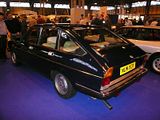
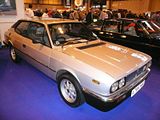
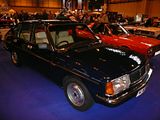 LAND-ROVER
LAND-ROVERA varied mixture of early Land-Rovers and the second generation Range Rover comprised the stand here.
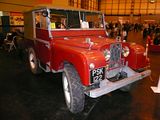
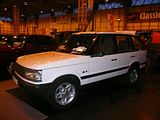
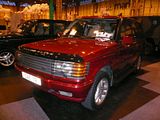 LINCOLN
LINCOLNFrom the mid 1950s was this car.
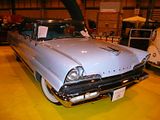 LOTUS
LOTUSA couple of the Elan Plus2S
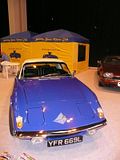
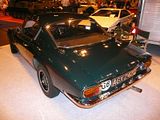
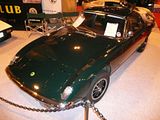 There were numerous examples of the long running Esprit, from some early Series 1 cars to the last S4S and V8 models.
There were numerous examples of the long running Esprit, from some early Series 1 cars to the last S4S and V8 models.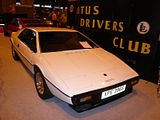
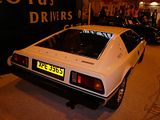
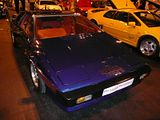
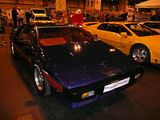
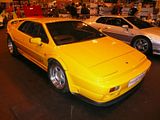 The Excel was well represented, too.
The Excel was well represented, too.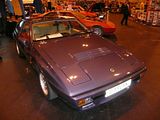
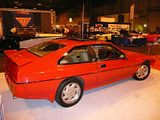 A first generation Exige
A first generation Exige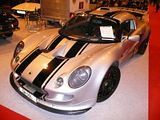 MARCOS
MARCOSThere was a large stand for these relatively unknown cars, with examples of many of the different models that were built from the 1960s right up to the last effort, the rather nice TSO that sadly did not make production before the company ceased trading a couple of years ago.
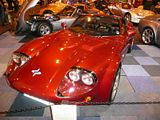
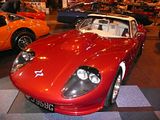
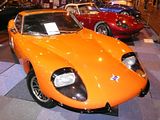

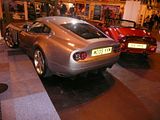
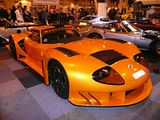


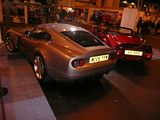
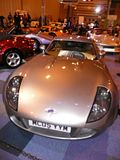 Rarest of all was this 1971 Mantis. Just 32 of these cars were produced, the only 4 seater Marcos ever made. It is probably better known as a Corgi model (I had one as a youngster).
Rarest of all was this 1971 Mantis. Just 32 of these cars were produced, the only 4 seater Marcos ever made. It is probably better known as a Corgi model (I had one as a youngster). 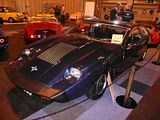
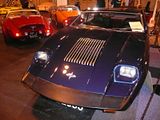
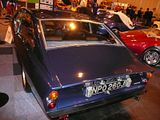
 MASERATI
MASERATI
A very simple stand with 2 rows of classic Maserati from the 1960s and early 1970s, augmented by one of the latest GranTurismo cars.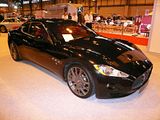 3500GT
3500GT5000GT
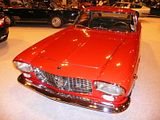
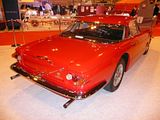
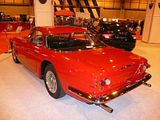
 Sebring
Sebring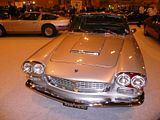
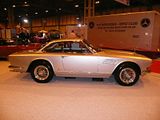 Mexico
Mexico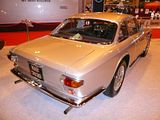 Mistral
Mistral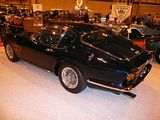 Indy
Indy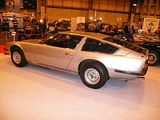
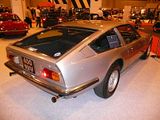
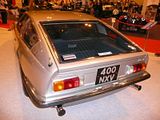 Ghibli
Ghibli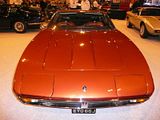

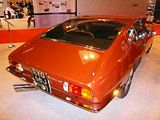 Khamsin
Khamsin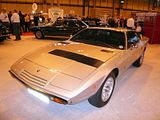
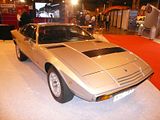
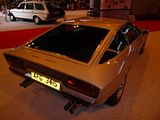
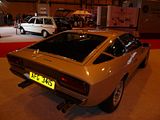 MATRA
MATRAA mix of Bagheera and Murena cars from the Romorantin maker were on the stand.
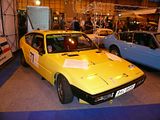
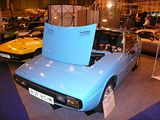
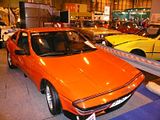 MERCEDES-BENZ
MERCEDES-BENZThis was a big stand, with a lot of space on it, making me wonder if half the cars did not show up. Centrepiece was a W212 E350CGi.
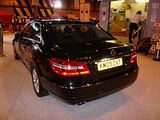 The W124 E500 was tucked away in one corner.
The W124 E500 was tucked away in one corner. Other classic Mercedes were in a line along one side of the stand.
Other classic Mercedes were in a line along one side of the stand.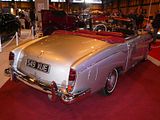
 There was an immaculate W124 car on the Meguiars stand.
There was an immaculate W124 car on the Meguiars stand.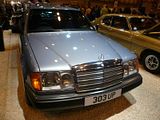 Also on a stand all by itself was this 190E 2.5-16 Evo.
Also on a stand all by itself was this 190E 2.5-16 Evo.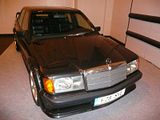 MG
MGSome lovely MG cars from the 1930s were to be found in the show, many of the unusual cars that are less commonly seen than the pure sports cars.
These Tickford bodies cars were particularly splendid. This is a TA.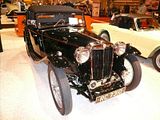
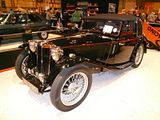 This is a 1.5 litre car, a car which was modified slightly for continued sale after WW2.
This is a 1.5 litre car, a car which was modified slightly for continued sale after WW2.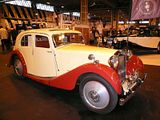
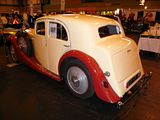
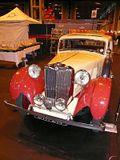 This Magnette was a popular sports saloon offered between 1953 and 1958.
This Magnette was a popular sports saloon offered between 1953 and 1958.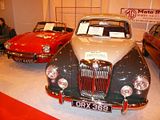 The well known sports cars were also on show, of course, These are Midgets.
The well known sports cars were also on show, of course, These are Midgets.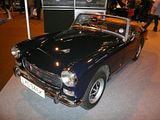
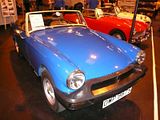 MG A
MG A
 The recent F and TF models were on display, too.
The recent F and TF models were on display, too.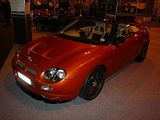 MICRO CARS
MICRO CARS
Tucked in the corner of Hall 1 was a varied display of Micro cars and bubble cars from the 1950s.This Isetta-BMW and the BMW 600 should be celebrated as the cars that kept BMW in business (sales of the 501 – 503 and 507 were never going to do that) and thus all current BMW drivers should be grateful for these rather odd looking devices. This argument did not seem to go down very well with the other forummers, who seemed less than convinced.
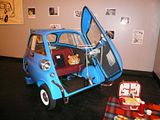
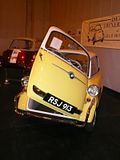 Messerschmit Tg250
Messerschmit Tg250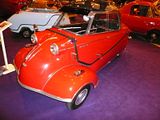 Two different examples of the Peel
Two different examples of the Peel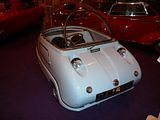
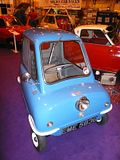 Bond Model F
Bond Model F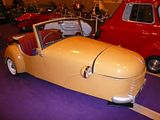 Berkley
Berkley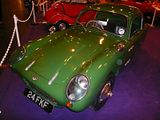 The Scootacar
The Scootacar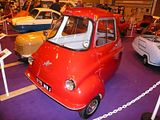 Meadows Frisky
Meadows Frisky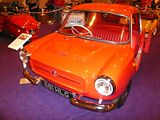 Goggomobil TS250
Goggomobil TS250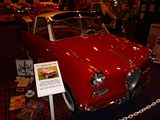 Zundapp Janus
Zundapp Janus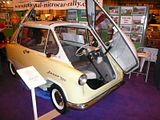 MINI
MININot surprisingly, for a car celebrating its half century, there were lots of Minis on show.
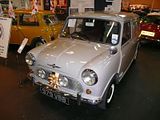
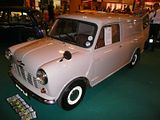
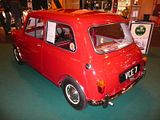
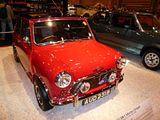 MORGAN
MORGANA big year for the Malvern Link marque, which celebrated its centenary earlier in the year. Many of the cars that I enjoyed seeing at those events were on this large stand to see again.
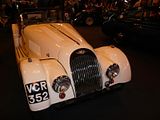

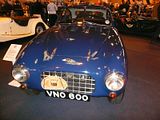 The early three wheelers are always fun to see, and even better to hear in action.
The early three wheelers are always fun to see, and even better to hear in action.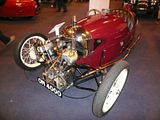
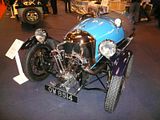

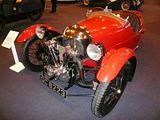
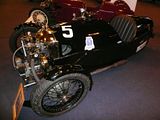
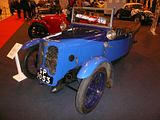 This is a Plus 4 from the 1950s.
This is a Plus 4 from the 1950s.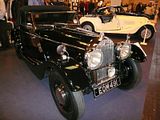 Other cars included the ill-fated Plus4 Plus, one of just 22 cars that were made, and this one-off body on a mid 1950s chassis.
Other cars included the ill-fated Plus4 Plus, one of just 22 cars that were made, and this one-off body on a mid 1950s chassis.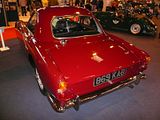 MORRIS
MORRISAn early “Bull Nose” model
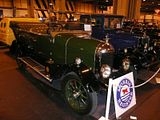 Morris Six
Morris Six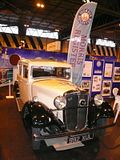 Every Classic Car show, it would seem, features the Morris Minor and there were certainly plenty of these much loved cars in attendance, with saloons, traveller, tourer, van and pickup to enjoy.
Every Classic Car show, it would seem, features the Morris Minor and there were certainly plenty of these much loved cars in attendance, with saloons, traveller, tourer, van and pickup to enjoy.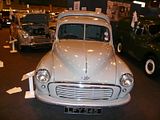
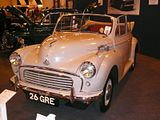

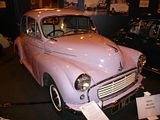
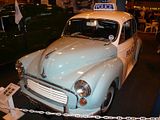

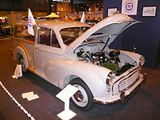
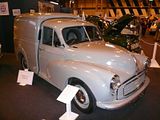




 A Morris badged version of the 1800 “Land Crab”.
A Morris badged version of the 1800 “Land Crab”.
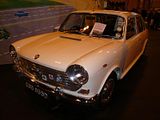 Much derided even when new, the Marina and Ital enjoy a limited following these days, as the 4 cars on the stand testified. I used to go to school in a Sandglow Series 2 estate car and have to say I am not really a fan!
Much derided even when new, the Marina and Ital enjoy a limited following these days, as the 4 cars on the stand testified. I used to go to school in a Sandglow Series 2 estate car and have to say I am not really a fan!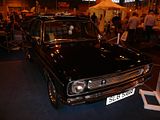
 NASH
NASHThe Metropolitan was conceived as the right car for a niche identified in the US for market for something fun that was far smaller than the domestic offerings, and it enjoyed moderate success. Based on Austin components, the cars were made in the UK,and a few of them stayed here.
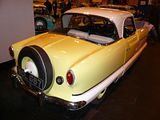
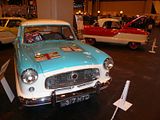
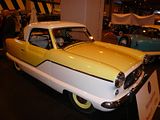
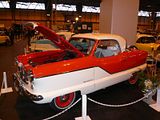
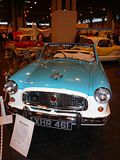
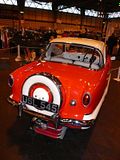 NISSAN/DATSUNGreeting show visitors at one of the entrances was this immaculate 1977 Bluebird 180B. A rival to the Cortina, this car sold well, but has now all but disappeared from our roads.
NISSAN/DATSUNGreeting show visitors at one of the entrances was this immaculate 1977 Bluebird 180B. A rival to the Cortina, this car sold well, but has now all but disappeared from our roads.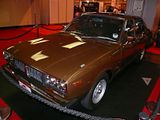
 The Cedric and Gloria owners had once again taken a stand to show off some of these rather eclectic machines.
The Cedric and Gloria owners had once again taken a stand to show off some of these rather eclectic machines.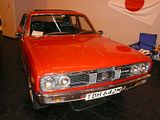

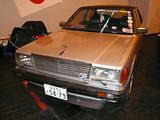
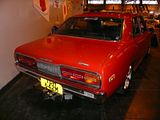 The classic 240Z was on a stand devoted to these admired machines.
The classic 240Z was on a stand devoted to these admired machines. Outside the main entrance to the NEC, Nissan had lined up the very latest 370Z in Coupe and Roadster formats.
Outside the main entrance to the NEC, Nissan had lined up the very latest 370Z in Coupe and Roadster formats.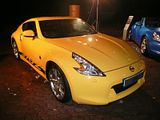
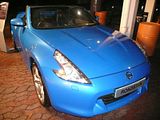 OLDSMOBILE
OLDSMOBILEA 1958 model EightyEight.
OPEL
Four examples of the GT were on show. This mini-Corvette was offered with 1100 and 1900 cc engines.
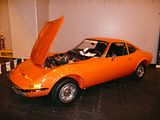

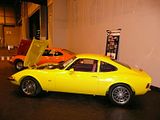
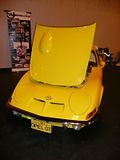 PANTHER
PANTHERLast year, one of the show stars was the incredible Six. This year, only the more familiar models were on show, with a black and white theme: DeVille, Lima, Kallista and J72.
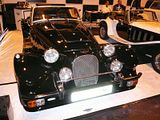

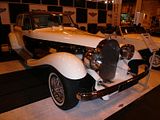
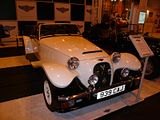 PEERLESS
PEERLESSThis fibre-glass car, which was later marketed as the Warwick GT, was based on TR3 mechanicals
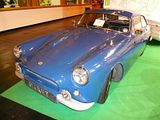 PEUGEOT
PEUGEOTThere were a couple of the very elegant 504 cabriolet cars, complete with their Pininfarina styling
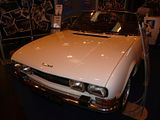
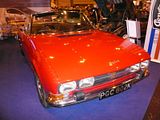
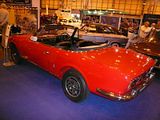 An immaculate 205 GTi.
An immaculate 205 GTi. POLICE CARS
POLICE CARS
A wide variety of former police cars was to be found on this stand.
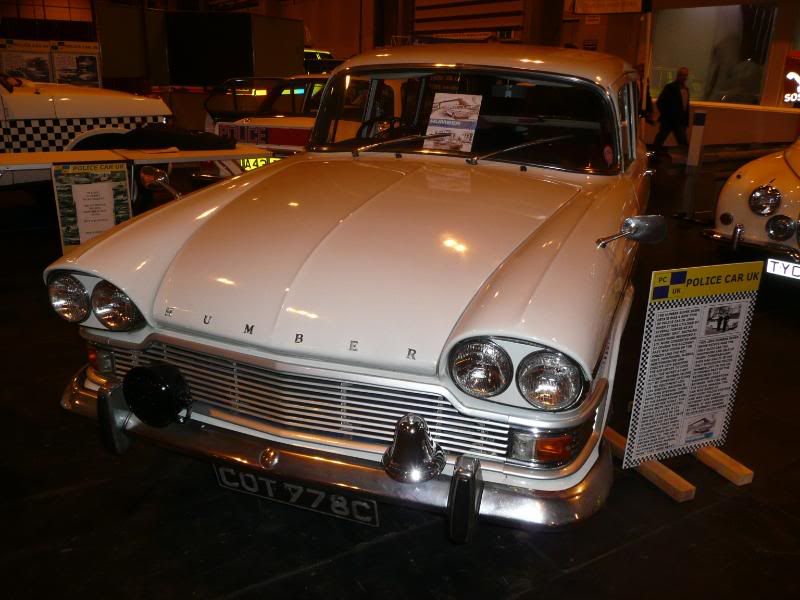
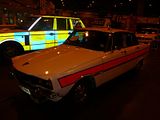 PORSCHE
PORSCHEA large stand, with representatives of the many different models from Porsche over the years
550 Spyder
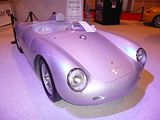 356
356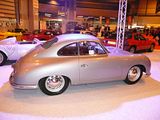 944
944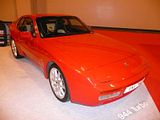
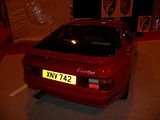 968
968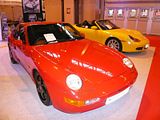 928
928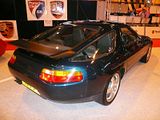 911 Turbo
911 Turbo
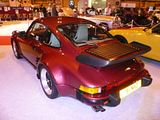 993
993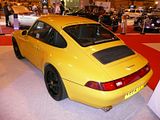 RELIANT
RELIANTThese Scimitar SS1 cars promised much, but did not really appeal to the mid 1980s market, and sold only in small quantities.
 RILEY
RILEYPopular sports car make of the 1930s, there were a couple of such cars on show, including the Imp.
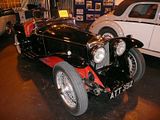 The RM Series of cars, launched in 1948, were popular sports sedans of their time.
The RM Series of cars, launched in 1948, were popular sports sedans of their time.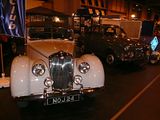
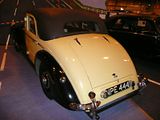

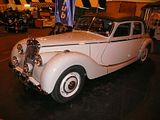 The 1.5 was one of a pair of cars that was intended to replace the Morris Minor.
The 1.5 was one of a pair of cars that was intended to replace the Morris Minor.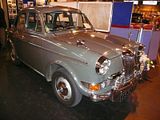 Bigger brother to this car was the Pathfinder/2.6 model.
Bigger brother to this car was the Pathfinder/2.6 model.Last Riley model was this, the 4/72, based on the Austin Cambridge/Morris Oxford.
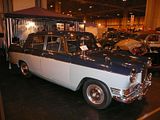
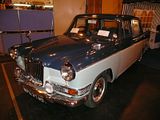 ROCHDALE
ROCHDALELooking a little like a cut down “E” Type, these cars were based on Riley 1.5 mechanicals.
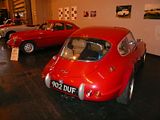
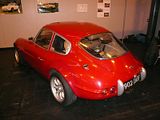
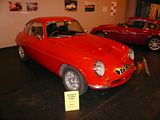
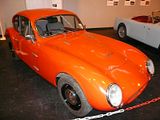 ROLLS-ROYCE
ROLLS-ROYCEA 20/25 model.
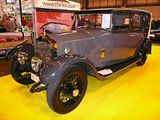 ROVER
ROVER The P4 – known sometimes as the “Auntie” Rover – had a long production life, running from 1948 until 1963, and was much loved of the professional classes. Not exciting, perhaps, but it was a solidly engineered car. Examples of many of the different models offered during this long production run were on show.
The P4 – known sometimes as the “Auntie” Rover – had a long production life, running from 1948 until 1963, and was much loved of the professional classes. Not exciting, perhaps, but it was a solidly engineered car. Examples of many of the different models offered during this long production run were on show.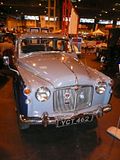


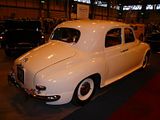

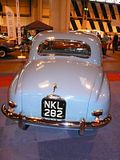
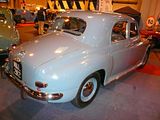 The P5 came in 1958, and although production ran until 1973, it is a measure of the worthiness of these cars that they were retained for government use until well into the 1980s.
The P5 came in 1958, and although production ran until 1973, it is a measure of the worthiness of these cars that they were retained for government use until well into the 1980s. 
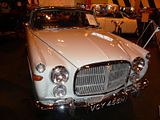 The P6 models – 2000, 2200 and 3500 – were much lauded when launched in 1963, and continued to be seen as highly desirable until well into the 1970s. Indeed, those who these days covet a 5 series BMW would doubtless have set their hearts on a 3500 with its V8 engine, and would have known that they had really achieved something when they could finally take delivery of one of these cars. The boot was not very large, so mounting the spare wheel on the boot lid was a popular option.
The P6 models – 2000, 2200 and 3500 – were much lauded when launched in 1963, and continued to be seen as highly desirable until well into the 1970s. Indeed, those who these days covet a 5 series BMW would doubtless have set their hearts on a 3500 with its V8 engine, and would have known that they had really achieved something when they could finally take delivery of one of these cars. The boot was not very large, so mounting the spare wheel on the boot lid was a popular option.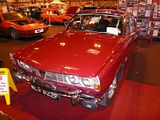
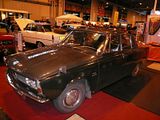
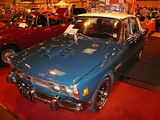
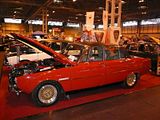
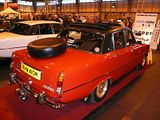
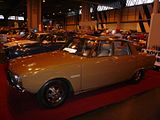
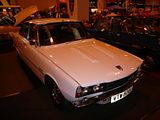
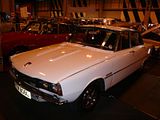
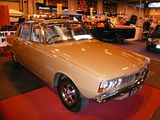

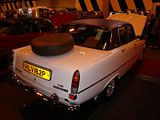
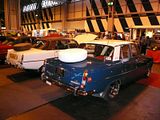
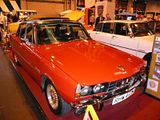 As a small boy, the SD1, launched in 1976 was to me an object of massive interest and desire. Sadly, we all know that the build quality was patchy and reliability was questionnable, but these are still fabulous cars.
As a small boy, the SD1, launched in 1976 was to me an object of massive interest and desire. Sadly, we all know that the build quality was patchy and reliability was questionnable, but these are still fabulous cars.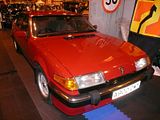
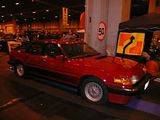

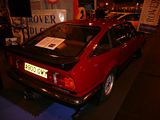
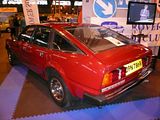

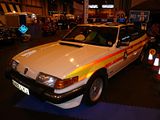 The “Tomcat” was the coupe version of the once popular 200/400 R8 series of cars.
The “Tomcat” was the coupe version of the once popular 200/400 R8 series of cars.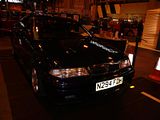
 The 200 BRM owners were present again this year, with a small display of these cars which are easily identified from the orange lining to the air intake.
The 200 BRM owners were present again this year, with a small display of these cars which are easily identified from the orange lining to the air intake.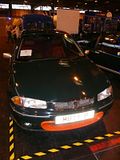
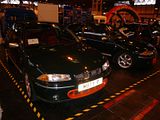 SAAB
SAABA mixture of classic SAABs were on this stand, ranging from the 96 model, through the Sonnet, the classic 99 Turbo and 900s.
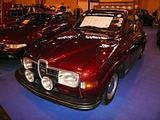
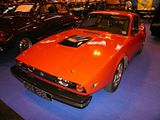
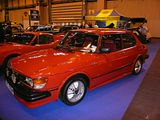 SINGER
SINGERThis is a mid 1930s Bantam, a model related to the Singer 9, a car designed to appeal to families who were perhaps purchasing their first car, and a direct competitor to the Austin and Morris of its day.
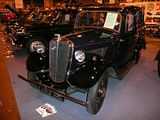
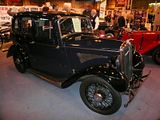 Sporting cars from the 1930s included this Le Mans and the 1.5 litre sports.
Sporting cars from the 1930s included this Le Mans and the 1.5 litre sports.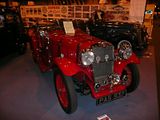
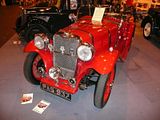
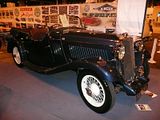 By the 1950s, Singer had ceased to produce their own designs, and their cars were simply more luxurious versions of the Hillman models on which they were based.
By the 1950s, Singer had ceased to produce their own designs, and their cars were simply more luxurious versions of the Hillman models on which they were based.This is a Gazelle, close relative of the Minx
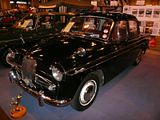
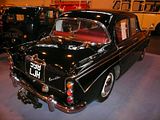 This Vogue was based on the Super Minx of the early 1960s.
This Vogue was based on the Super Minx of the early 1960s.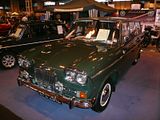
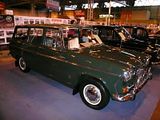
 The Chamois was based on the Imp.
The Chamois was based on the Imp.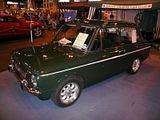 SKODA
SKODAThe Popular, from 1939.
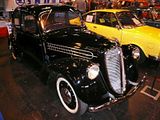
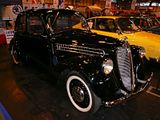
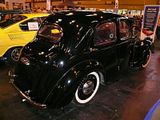 The 1000MB
The 1000MB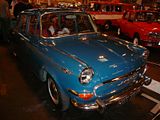
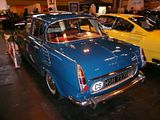 The later S110 Coupe
The later S110 Coupe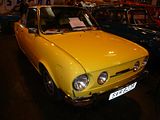
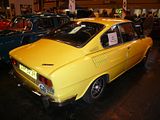 STANDARD
STANDARDExamples of the inter-war offerings from this Coventry marque were these:
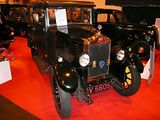
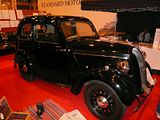 The Vanguard was a good export earner for Britain following its launch in 1948. Three generations of this car were offered, right up to 1963, with estate car models to complement the saloons. The final models were also offered as the Ensign, a cheaper model with a four cylinder engine.
The Vanguard was a good export earner for Britain following its launch in 1948. Three generations of this car were offered, right up to 1963, with estate car models to complement the saloons. The final models were also offered as the Ensign, a cheaper model with a four cylinder engine.
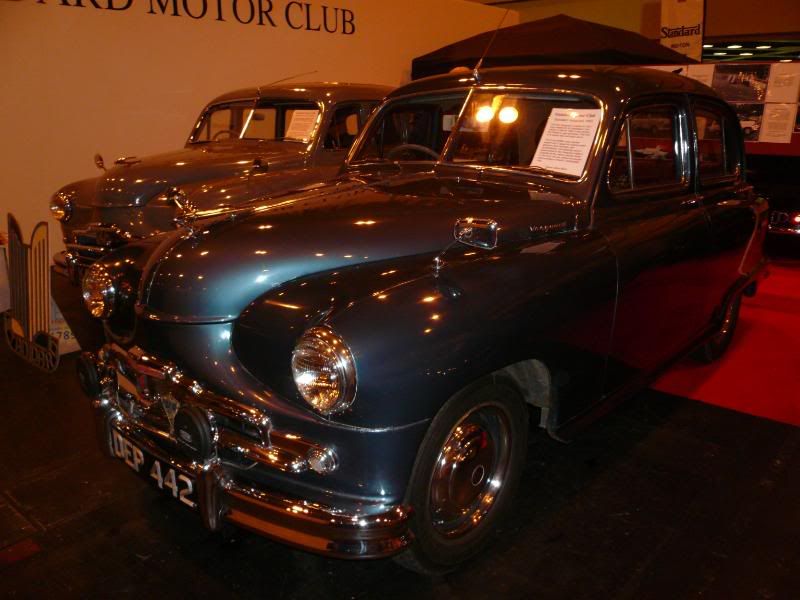

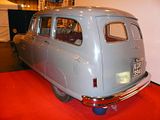
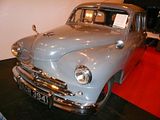
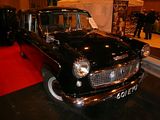
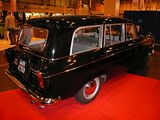 STUDEBAKER
STUDEBAKERA rather tatty looking Champion from 1950 was in the area of cars for sale, and someone had clearly decided to acquire it, as the car sported “Sold” signs.
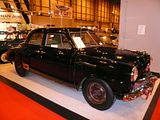 SUNBEAM
SUNBEAMBest known now for the Alpine and Tiger sports cars that first appeared 50 years ago, and which were sold for 8 years as a direct competitor to the MGA and MGB. The Tiger models looked pretty standard but had a V8 Ford engine squeezed under the bonnet – something which Chrysler Corporation were not keen on when they acquired the Rootes Group in 1967.
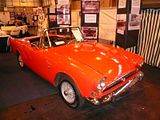

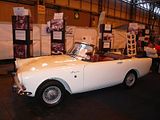
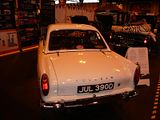
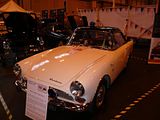 Sunbeam also offered the Rapier, a coupe based on the Minx body in the 1950s and upgraded to sit on the Arrow platform in the mid 1960s. This Rapier H120 had the twin carburettor engine and was quite rapid for its day. Whilst the Prairie Wind paint is not to my taste – nor to anyone else’s it would seem, as only one car was ever built in this colour – the rest of it is rather nice. The market preferred the Capri, though!
Sunbeam also offered the Rapier, a coupe based on the Minx body in the 1950s and upgraded to sit on the Arrow platform in the mid 1960s. This Rapier H120 had the twin carburettor engine and was quite rapid for its day. Whilst the Prairie Wind paint is not to my taste – nor to anyone else’s it would seem, as only one car was ever built in this colour – the rest of it is rather nice. The market preferred the Capri, though!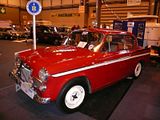

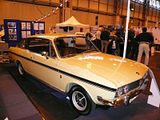 The Venezia was a low volume production car, based on the Rapier, from 1963, with Italian styling.
The Venezia was a low volume production car, based on the Rapier, from 1963, with Italian styling.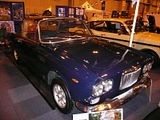 TALBOT (inc SIMCA/CHRYSLER)
TALBOT (inc SIMCA/CHRYSLER)Although not perhaps the most meritorious cars of their era, the vehicles shown here are all now rare.
The 2 litre was the flagship model intended to take over after the big Humber models had ceased production. It only ever enjoyed very moderate success.
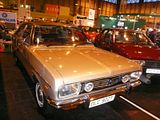
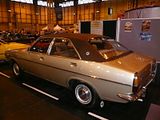
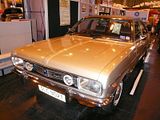 The Alpine was far more successful, earning the “Car of the Year” award in January 1976. When the alternatives were something like a Morris Marina, you can see why this car had its appeal. However, saddled with rather unrefined engines, and with a reputation for poor reliability, interest in these cars faded rather quickly, and the launch of the three-box model, the Solara, and a facelift did little to stem the drop in sales.
The Alpine was far more successful, earning the “Car of the Year” award in January 1976. When the alternatives were something like a Morris Marina, you can see why this car had its appeal. However, saddled with rather unrefined engines, and with a reputation for poor reliability, interest in these cars faded rather quickly, and the launch of the three-box model, the Solara, and a facelift did little to stem the drop in sales.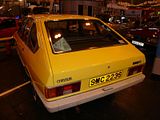
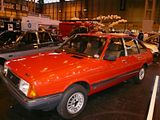
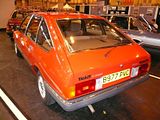

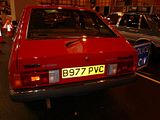
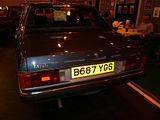
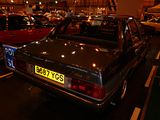
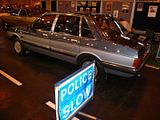
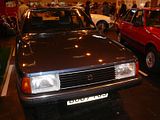
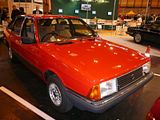 The Tagora came at just the wrong time, launched in 1980, soon after the acquisition of Talbot by Peugeot, it found in-house competition from the 505 and 604 models, and it had a very short life of less than 3 years, during which time about 31,000 were sold. Most of those sold had a 2.2 litre engine, but the show car was a very rare 2.6 SX model, which developed 177 bhp – not inconsiderable for its day.
The Tagora came at just the wrong time, launched in 1980, soon after the acquisition of Talbot by Peugeot, it found in-house competition from the 505 and 604 models, and it had a very short life of less than 3 years, during which time about 31,000 were sold. Most of those sold had a 2.2 litre engine, but the show car was a very rare 2.6 SX model, which developed 177 bhp – not inconsiderable for its day. 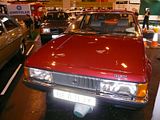
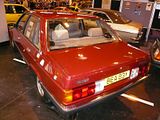
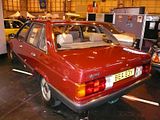
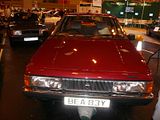 TAXI
TAXIA special display of historic London taxis showed some of the cabs that used to ply our streets. This is an Austin FX3, the precursor to the famous Black Cab, FX4 model.
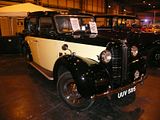 TOYOTA
TOYOTASole model representing the huge variety of what has until recently been the world’s largest car maker, were various MR2s from the three different model types that were produced.

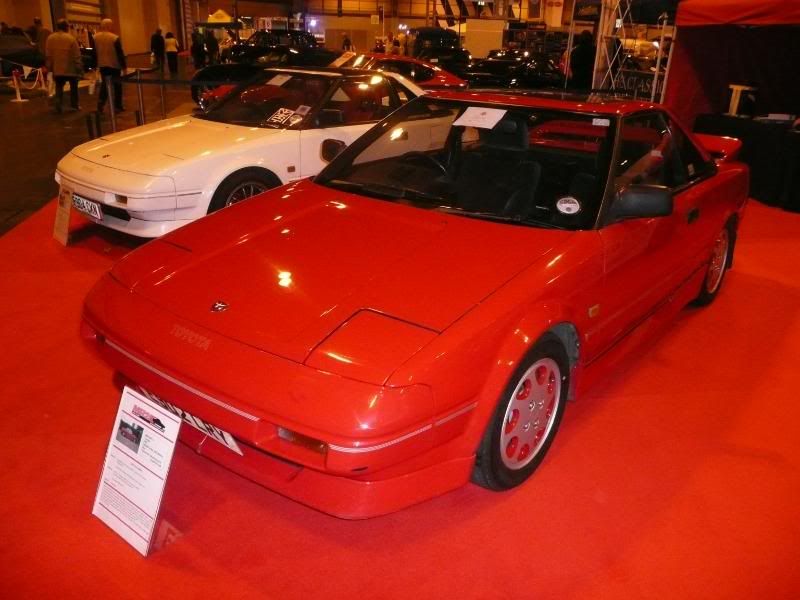 TRABANT
TRABANTA definite cult car, and one which came to symbolise Eastern Germany. There has been renewed interest, unsurprisingly, with all the celebrations of the 20th anniversary of the falling of the Berlin wall.
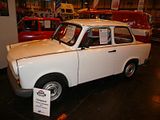

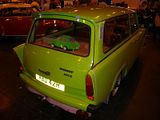 TRIUMPH
TRIUMPHThere were numerous Triumph cars from the various clubs that cater for enthusiasts for these cars. Needless to say, we called in on the TR Register to catch up with Dave Gibson and were very grateful for the offer of a refreshing cup of coffee.
This one-off Herald hatchback featured recently in one of the magazines, following its lengthy restoration. A car before its time, for sure, though much of the finish associated with the hatch itself and the folding rear seats looked rather crude.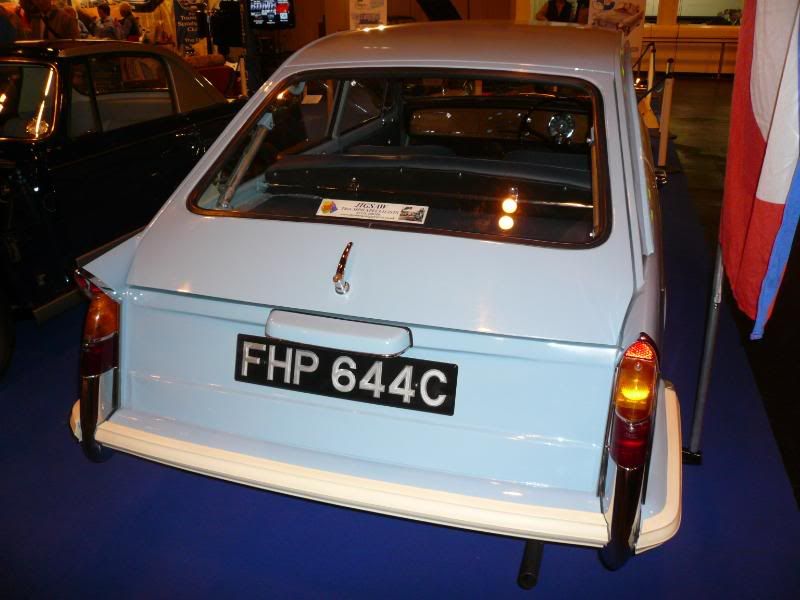
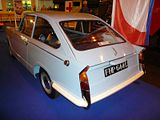
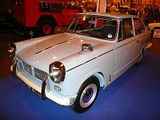 A good mixture of TRs were to be seen.
A good mixture of TRs were to be seen.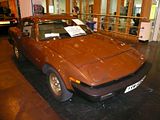


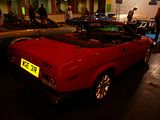
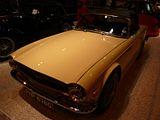
 Vitesse.
Vitesse.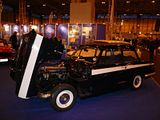
The Dolomite was a sports saloon of the early 1970s, before the genre had become quite so popular.

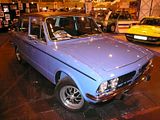
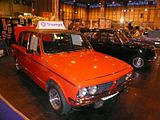
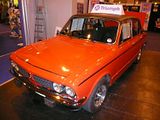 Precursor to this car was the 1300, a front wheel drive saloon launched in 1965.
Precursor to this car was the 1300, a front wheel drive saloon launched in 1965.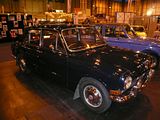
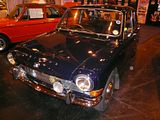 There were plenty of Stags, too.
There were plenty of Stags, too.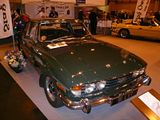
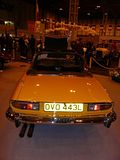
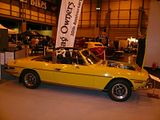
 TURNER
TURNERThese sports cars were built in the late 1950s and early 1960s and can often be seen at classic motorsport events.
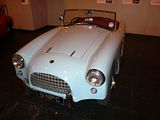
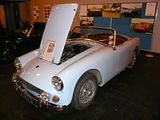
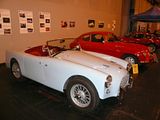 TVR
TVRA huge stand, with special tributes to the late Peter Wheeler, who did so much to transform the image of the Blackpool based company.
Several of the stand cars were racers, such as these:
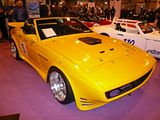

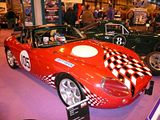 This was a 1600M, one of the earlier cars.
This was a 1600M, one of the earlier cars.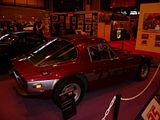 VANDEN PLAS
VANDEN PLASThe pinnacle of luxury among the BMC marques. This Princess R was based on the Westminster, but fitted with a 4 litre Rolls Royce engine.
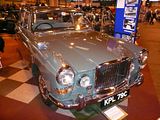 The 1100 was a very plush version of Issigonis’ best selling family car.
The 1100 was a very plush version of Issigonis’ best selling family car.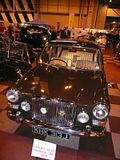
 During the 1970s and 1980s, the badge became devalued further, such as it when it was applied to top of the range Montego and Maestro cars.
During the 1970s and 1980s, the badge became devalued further, such as it when it was applied to top of the range Montego and Maestro cars.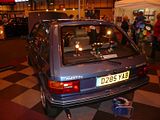 VAUXHALL
VAUXHALLThe FD model Victor, launched in 1967 was one of the first volume cars to offer ohc engines. This generation of the car was notably bigger than the Cortina, and never sold in the same volumes. The show cars included the VX4/90 and Ventora models as well as the regular 1600 saloon.
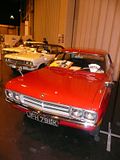

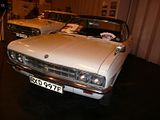
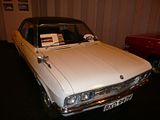
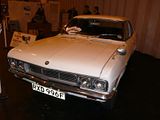
 These cars were succeeded by the FE series of cars, which ended up being the last of the line, before an Opel based replacement, the Carlton stepped into service in 1978.
These cars were succeeded by the FE series of cars, which ended up being the last of the line, before an Opel based replacement, the Carlton stepped into service in 1978.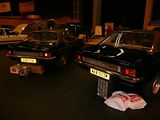

 When this Cavalier CD was new, in 1983, it was seen as highly desirable by all those whose car schemes confined them to the 1.6L model. Now a rare sighting.
When this Cavalier CD was new, in 1983, it was seen as highly desirable by all those whose car schemes confined them to the 1.6L model. Now a rare sighting.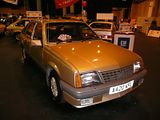
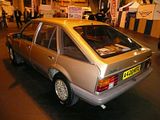 Even rarer is the first generation Cavalier, and this is believed to be the earliest surviving car.
Even rarer is the first generation Cavalier, and this is believed to be the earliest surviving car.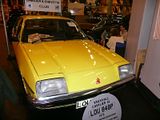 The Chevette, launched earlier in 1975 was the first Vauxhall to be so clearly based on an Opel, and yet it sold well.
The Chevette, launched earlier in 1975 was the first Vauxhall to be so clearly based on an Opel, and yet it sold well.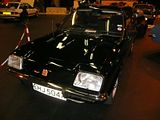
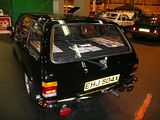
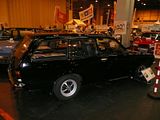 Most of the Astras at the show were somewhat modified. This original car is one of numerous limited edition cars that were offered officially by Vauxhall themselves.
Most of the Astras at the show were somewhat modified. This original car is one of numerous limited edition cars that were offered officially by Vauxhall themselves.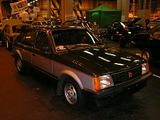 This PB Cresta dates from 1962.
This PB Cresta dates from 1962.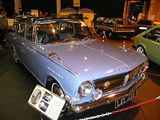
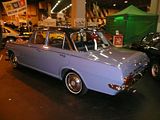 2 of the just 4 Concept cars that Vauxhall have ever produced were on show on Classic and Sports Car’s stand.
2 of the just 4 Concept cars that Vauxhall have ever produced were on show on Classic and Sports Car’s stand.
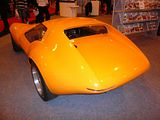
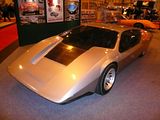
 VOLKSWAGEN
VOLKSWAGENBeetles featured, of course.
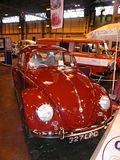

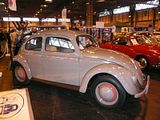 As did several of the Karmann Ghia variant.
As did several of the Karmann Ghia variant.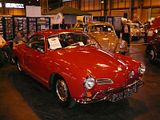 Plenty of the “Bus” on show, in all sorts of guises.
Plenty of the “Bus” on show, in all sorts of guises.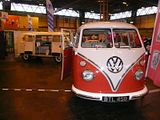
 The Golf was represented with a display of Series 1 cars, including these.
The Golf was represented with a display of Series 1 cars, including these.
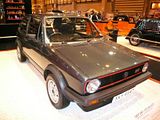
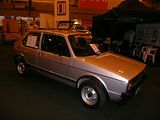
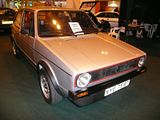 A nice display of Sciroccos , with representatives of both the first and second generation cars.
A nice display of Sciroccos , with representatives of both the first and second generation cars.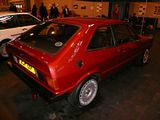
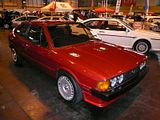
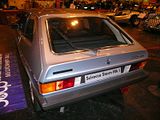
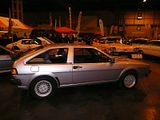
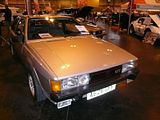
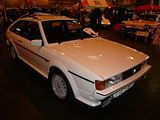
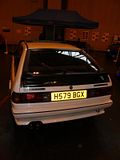 VOLVO
VOLVO
Two separate club stands, close to each other. The first one had just three cars on it: 262 Coupe, a 164TE and a 1927 early Volvo.
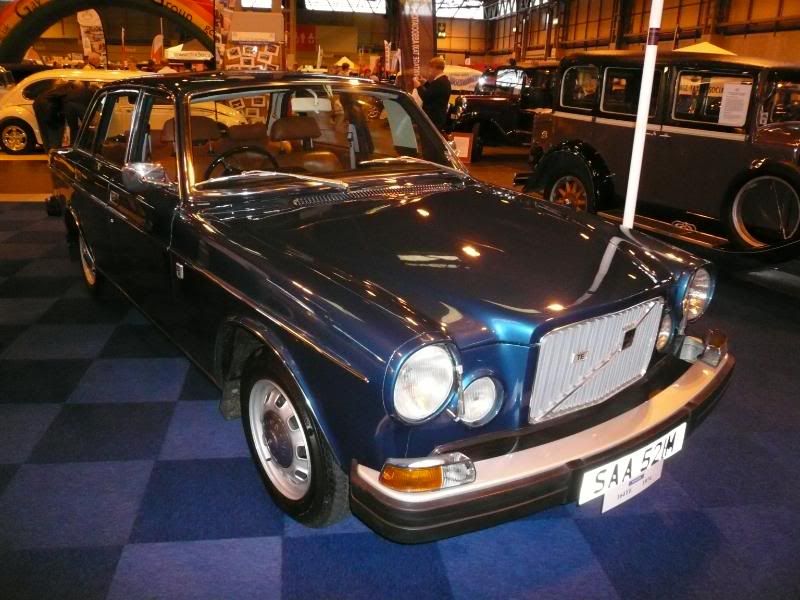
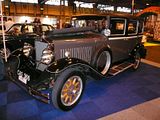 The other stand had examples of the PV544 Amazon (including a rare convertible), and a 1980 244 DL,
The other stand had examples of the PV544 Amazon (including a rare convertible), and a 1980 244 DL,
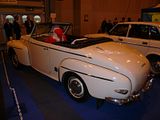

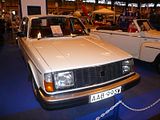 WARTBURG
WARTBURGThere was also a Barkas van on the stand. The Ford Transit of Eastern Germany.
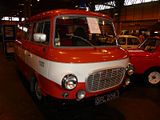 The Knight model sold quite well in the UK from 1967 until the mid 70s, but it continued in production long after that, and the stand included a saloon and this late model “Tourist” (estate) car.
The Knight model sold quite well in the UK from 1967 until the mid 70s, but it continued in production long after that, and the stand included a saloon and this late model “Tourist” (estate) car.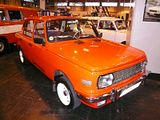
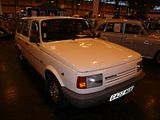
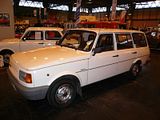
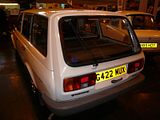 An earlier model was this, the 1000.
An earlier model was this, the 1000.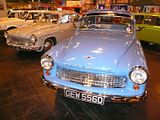
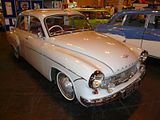
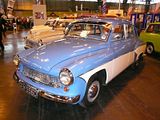
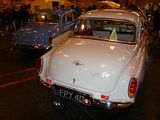
 WOLSELEY
WOLSELEYA 1930s model.
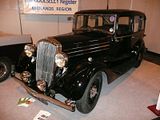 After World War 2, Wolseley became little more than a series of badge engineered products based on Morris or Riley designs, with that added touch of luxury. This 6/80 dates from 1948, and was based on the new Morris Oxford of the day.
After World War 2, Wolseley became little more than a series of badge engineered products based on Morris or Riley designs, with that added touch of luxury. This 6/80 dates from 1948, and was based on the new Morris Oxford of the day.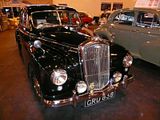
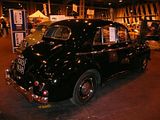 The 15/60 was the first of the Farina-based family cars, appearing in late 1958. 1962 brought a larger engine, and a rename to 16/60.
The 15/60 was the first of the Farina-based family cars, appearing in late 1958. 1962 brought a larger engine, and a rename to 16/60.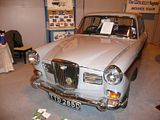
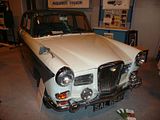 The Hornet was a derivative of the Mini, fitted with a small boot.
The Hornet was a derivative of the Mini, fitted with a small boot.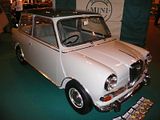
 There was a splendid period display featuring 5 of the Heinz Hornets. 57 of these cars, a unique Crayford conversion of the Wolseley Hornet, were awarded as prizes by Heinz in 1966.
There was a splendid period display featuring 5 of the Heinz Hornets. 57 of these cars, a unique Crayford conversion of the Wolseley Hornet, were awarded as prizes by Heinz in 1966.

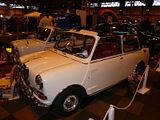
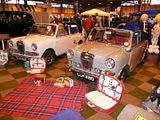
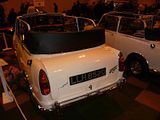 OTHER
OTHER
The HSCC had a stand with some historic racers on it, such this Jaguar, driven by John Watson, and a Maserati 250F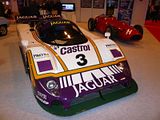 Something of an oddity, the “Easter Egg”
Something of an oddity, the “Easter Egg”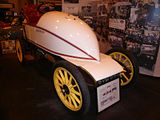
MPH09 SHOW
Frankly, I thought this was very disappointing. Even smaller than last year, the show contained some trade stands, manufacturer stands from just Peugeot, Citroen and Volvo, a few supercars, a gallery of cars with famous owners, and lots and lots of heavily customised stuff which was not my taste, and seemed to be no-one else’s taste, either. You could see the whole lot in 30 minutes.
TOP GEAR CARS
Another sighting for the Mallorcan rally cars that I saw at Beaulieu a couple of weeks ago.
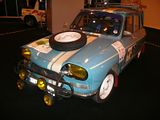
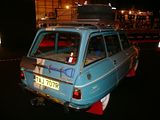
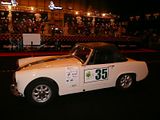
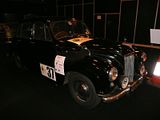
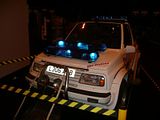 LANCIA
LANCIAA display of historic Lancia from racing and rallying, including the iconic Stratos
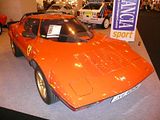
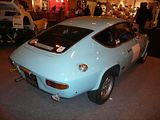
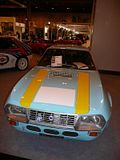
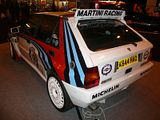
 CITROENTheir own stand had a DS3, a C5 and a C4 WRC car on it.
CITROENTheir own stand had a DS3, a C5 and a C4 WRC car on it.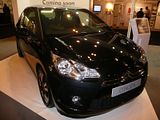
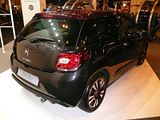 The GT was the star in among the supercars.
The GT was the star in among the supercars.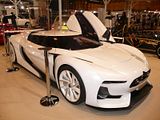
 PEUGEOT
PEUGEOTThe new 308 RC-Z
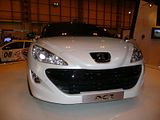
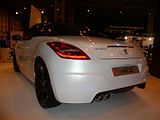
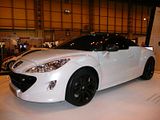 The 308CC is less convincing
The 308CC is less convincing VOLVO
VOLVOThe S60 Concept car had another outing

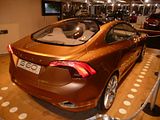 First UK showing for the facelifted C30. Not a visual improvement to my mind.
First UK showing for the facelifted C30. Not a visual improvement to my mind.
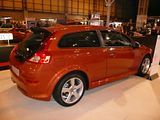 SUPERCARS
SUPERCARSRefurbished classic Porsche 911s
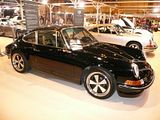
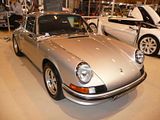 Invicta
Invicta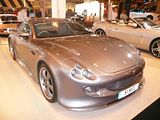
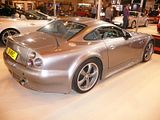 Ultima
Ultima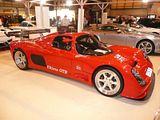
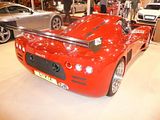 Lotus Exige
Lotus Exige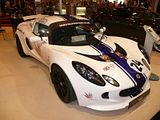 Rolls Royce Phantom
Rolls Royce Phantom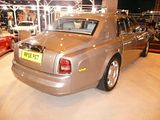

 Ferrari California
Ferrari California Audi R8 V10
Audi R8 V10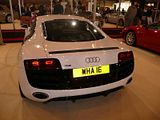 Aston Martin DBS
Aston Martin DBS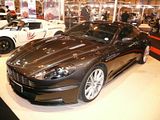 Alfa Romeo 8C Competizione
Alfa Romeo 8C Competizione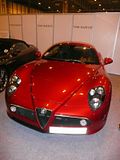
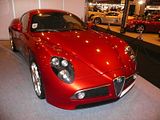 Ferrari 599 GTB
Ferrari 599 GTB
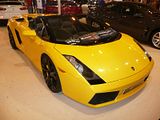
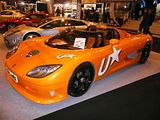 CARS of the CELEBRITIES
CARS of the CELEBRITIESRichard Hammond’s Morgan
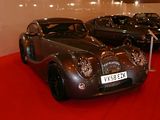 James May’s Corniche
James May’s Corniche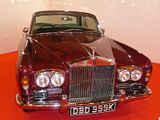 Jay Kay
Jay Kay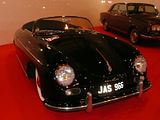
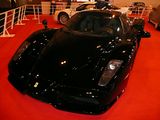
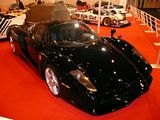 James Martin
James Martin
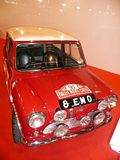 Others
Others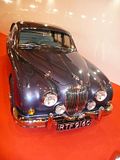
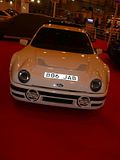

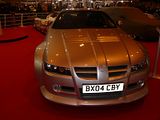
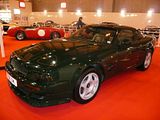

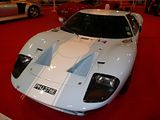
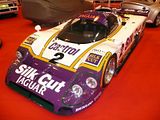 AND FINALLY
AND FINALLYOh dear. Not so much “indescribable” as “inexcusable”


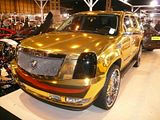
2009-11-15 15:30:26
 Even 2 full days are not sufficient to see all the exhibits at the UK’s largest classic car show, the NEC Event, which is also linked to the MPH show with Top Gear Live Action theatre. Two days is more than enough to walk your legs short, though, so it is some relief in that respect to sit at my PC, uploading photos, writing this item and formatting it, as I reflect on the bewildering array of interesting cars I have just seen, the many good conversations both with friends and fellow forummers and some perfect strangers who were clearly also blessed with the enthusiast’s love of cars.
Even 2 full days are not sufficient to see all the exhibits at the UK’s largest classic car show, the NEC Event, which is also linked to the MPH show with Top Gear Live Action theatre. Two days is more than enough to walk your legs short, though, so it is some relief in that respect to sit at my PC, uploading photos, writing this item and formatting it, as I reflect on the bewildering array of interesting cars I have just seen, the many good conversations both with friends and fellow forummers and some perfect strangers who were clearly also blessed with the enthusiast’s love of cars.








































































































































































































































































































































































































































































































































































































































































































































































































